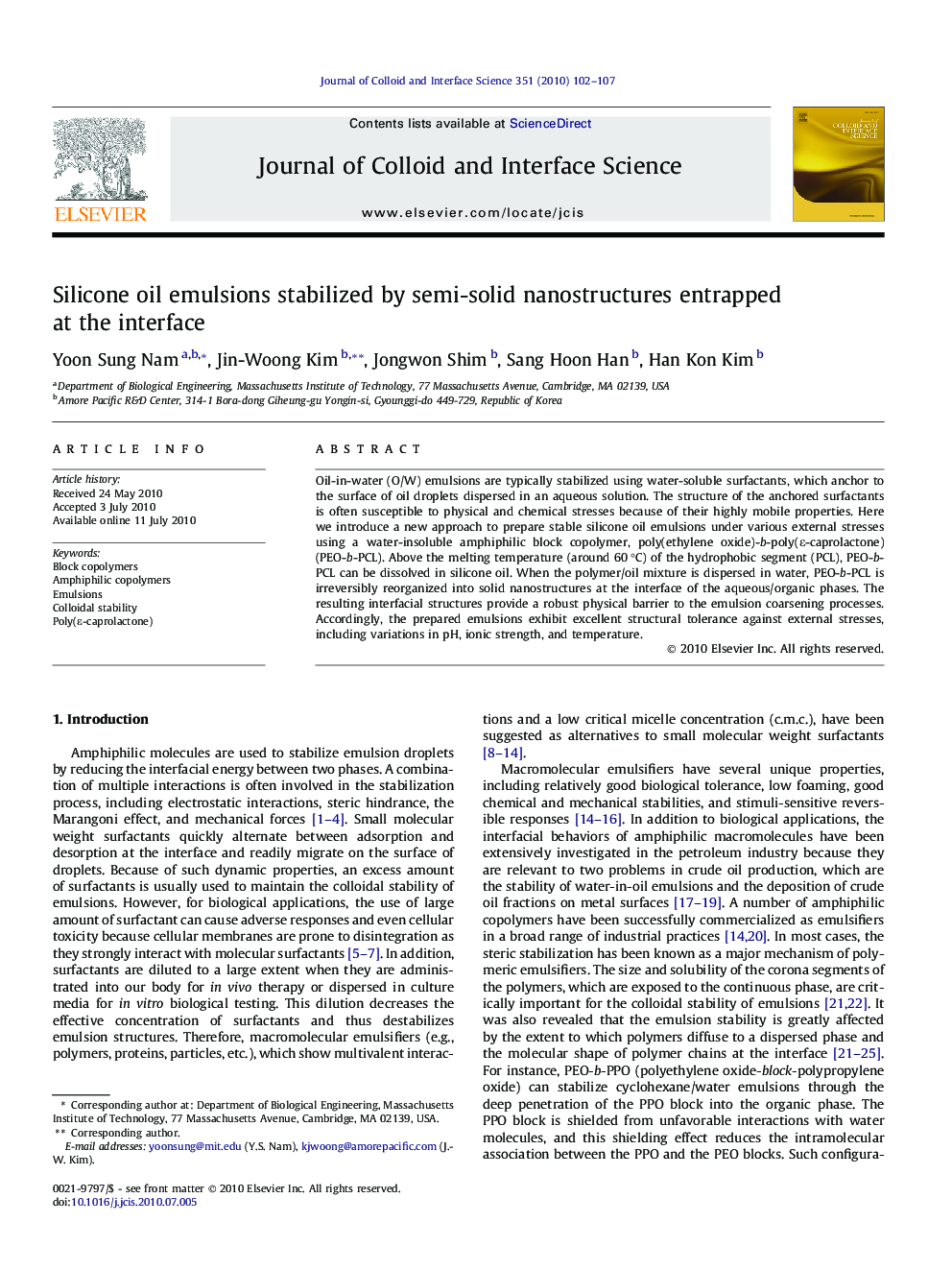| Article ID | Journal | Published Year | Pages | File Type |
|---|---|---|---|---|
| 609024 | Journal of Colloid and Interface Science | 2010 | 6 Pages |
Oil-in-water (O/W) emulsions are typically stabilized using water-soluble surfactants, which anchor to the surface of oil droplets dispersed in an aqueous solution. The structure of the anchored surfactants is often susceptible to physical and chemical stresses because of their highly mobile properties. Here we introduce a new approach to prepare stable silicone oil emulsions under various external stresses using a water-insoluble amphiphilic block copolymer, poly(ethylene oxide)-b-poly(ε-caprolactone) (PEO-b-PCL). Above the melting temperature (around 60 °C) of the hydrophobic segment (PCL), PEO-b-PCL can be dissolved in silicone oil. When the polymer/oil mixture is dispersed in water, PEO-b-PCL is irreversibly reorganized into solid nanostructures at the interface of the aqueous/organic phases. The resulting interfacial structures provide a robust physical barrier to the emulsion coarsening processes. Accordingly, the prepared emulsions exhibit excellent structural tolerance against external stresses, including variations in pH, ionic strength, and temperature.
Graphical abstractSilicone oil emulsions are stabilized using a water-insoluble amphiphilic block copolymer, poly(ethylene oxide)-b-poly(ε-caprolactone), which is irreversibly reorganized into a solid nanostructure at the interface between oil and water.Figure optionsDownload full-size imageDownload high-quality image (81 K)Download as PowerPoint slideResearch highlights► A water-insoluble block copolymer, PEO-b-PCL, can stabilize silicone emulsions. ► PEO-b-PCL forms a mechanically stable, semi-solid structure at the oil–water interface. ► Silicone emulsions stabilized PEO-b-PCL exhibit a particle-like rheological behavior. ► Silicone emulsions stabilized PEO-b-PCL show excellent colloidal stability under various experimental conditions.
